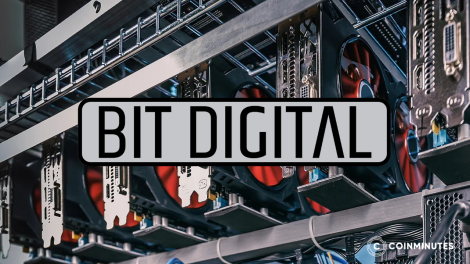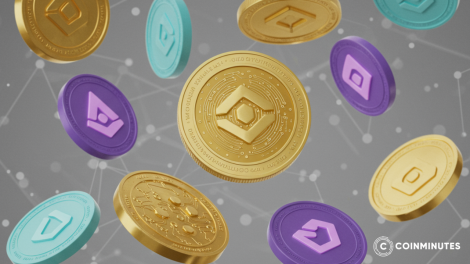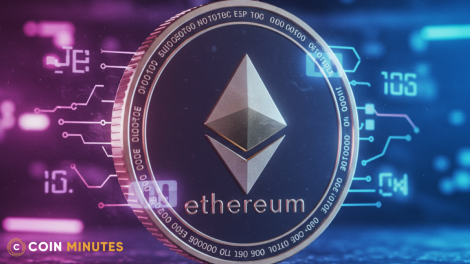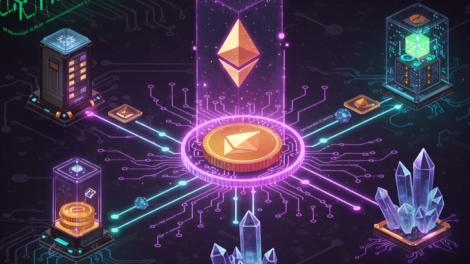What Is Proof of Work? How It Works And Why Blockchains Use It

The digital world hums. It buzzes with transactions, with data, with this newfangled money they call cryptocurrency. And holding some of it together, especially the older coins, is something called Proof of Work. It’s a mouthful, sure. Sounds like something you’d hand your boss to show you weren’t just staring at the ceiling all day. And maybe, in a way, it is. Computers do the heavy lifting here—a lot of it.
What is Proof of Work?
Alright, let's get this straight. Proof of Work isn't some certificate you hang on the wall. It's a mechanism. A digital hoop computers have to jump through. Think of it like this: the blockchain is a public ledger, a long list of who sent what to whom. To add a new page—a "block"—to this ledger, you can't just scribble it in. You have to prove you did some hard work. Real computational heavy lifting.
This "work" involves solving a complex mathematical puzzle. It’s not algebra class. It’s more like guessing a specific number out of trillions. Your computer makes guess after guess, burning electricity and processing cycles. The first one to find the right number gets to add the new block of transactions to the chain. This is what they call "mining."

The concept of Proof of Work
Why all this effort? Security, mostly. If it’s hard and costly to add a block, it’s even harder and more costly to go back and change old blocks. To cheat the system, you’d have to redo all the work for that block and all the blocks that came after it, faster than everyone else on the network. For a big network like Bitcoin, that’s practically impossible. It would take an insane amount of computing power, more than any single entity is likely to have. So, the "work" acts as a deterrent. It makes honesty the most profitable strategy.
This system was first properly used by Bitcoin. Satoshi Nakamoto, the mystery man or woman or group, needed a way for people who don’t know or trust each other to agree on the state of the Bitcoin ledger. PoW was the answer. It allows a decentralized network to come to a consensus. Everyone agrees on which transactions are valid and in what order they happened, all because the cost of lying is too high. It's a brute-force solution, in a way. But it worked. It kicked off this whole cryptocurrency circus. It’s foundational. Without it, there’s no Bitcoin as we know it, no secure decentralized ledger that anyone can, in theory, participate in verifying.
How Does Proof of Work Work?
So, you want the nuts and bolts. The greasy bits under the hood. Fine. But don’t expect a love story. This is about computers sweating—metaphorically speaking.
The Hash Function
It starts with something called a hash function. Think of it as a magic meat grinder for data. You throw any data in, and out comes a string of letters and numbers of a fixed length. A fingerprint. Like SHA-256, the one Bitcoin uses.
A few key things about this grinder:
-
One-way street: Easy to get the hash from the data. Nearly impossible to get the data back from the hash.
-
Deterministic: Same input always gives the same hash. No surprises.
-
Tiny change, big difference: Change one tiny bit of the input data, and the output hash changes completely. Unpredictably. This is important.
Miners take a bundle of new, unconfirmed transactions. They add some other stuff—like the hash of the previous block, a timestamp. And then, the crucial bit: a random number called a nonce.
The Mining Process
The "mining" is basically this: the computer starts guessing nonces. It takes all that block data, adds a nonce, and runs it through the hash function. It gets a hash. Then it looks at the hash. Does it meet the target? Probably not on the first try. Or the millionth.
The network sets a difficulty target. This target usually means the hash has to start with a certain number of zeros. To get that specific kind of hash, you just have to keep trying different nonces. Brute force. Billions, trillions of guesses per second, across the whole network. It’s like trying to find a specific grain of sand on a very large, very digital beach. The first miner whose computer stumbles upon a nonce that produces the desired hash wins that round.
The Role of Difficulty
Now, if computers get faster, or more miners join the party, they’d find that magic nonce quicker. Blocks would get added too fast. The system doesn’t like that. Bitcoin, for example, wants a new block roughly every 10 minutes.
So, the difficulty adjusts. Every couple of weeks, the network looks at how fast blocks were being created. Too fast? The difficulty goes up—meaning the target hash needs even more leading zeros, making it harder to find. Too slow? Difficulty goes down. It’s a self-correcting mechanism. Keeps the rhythm steady.
Why Is It Called “Work”?
It's called "work" because it genuinely requires a massive expenditure of computational resources and, by extension, electricity. The computers aren't just idly sitting by; they are performing trillions of calculations. This effort is quantifiable. You can see the electricity bills. You can hear the hum of the machines.
This "work" serves a purpose. It makes the creation of new blocks costly and time-consuming. This cost is what gives the newly minted coins their initial value, in a way. It's also what secures the network. To attack the network by creating fraudulent blocks, an attacker would need to expend an enormous amount of computational power—likely more than all the honest miners combined. This is the famous 51% attack scenario. It’s hard. It’s expensive. That’s the point.
Reward and Verification
The miner who finds the magic hash broadcasts their new block (with the winning nonce and hash) to the rest of the network. Other computers quickly check it. Is the hash valid? Does it meet the difficulty target? Are the transactions in the block legitimate? Verification is easy and fast—unlike the work to find the hash in the first place.
If it all checks out, other miners accept the block. They add it to their copy of the blockchain and start working on the next block, trying to find a hash for it, building on top of the one just added.

Rewards miners get in Proof of Work networks
And the winning miner? They get a prize. Two parts:
-
Block reward: A certain amount of newly created cryptocurrency. This is how new coins are minted. For Bitcoin, this reward halves roughly every four years.
-
Transaction fees: Small fees attached to the transactions included in the block.
That’s the incentive. That’s why people spend fortunes on mining hardware and electricity. For the chance at that reward. It’s a gritty, energy-guzzling, competitive grind. But that’s PoW for you.
Why Do Blockchains Use Proof of Work?
You might be thinking, this sounds like a lot of fuss. A global network of computers burning energy just to guess numbers. There must be a good reason, right? Or at least, a reason that sounded good at the time. Well, there are a few—interconnected, like most things in this racket.
Securing The Network
This is PoW's main job. It makes the blockchain ledger safe. It makes altering past transactions incredibly difficult. Imagine trying to reverse a payment. That transaction is in a block. Many blocks followed it. To change the old block, you must redo its Proof of Work. You must also redo the work for every single block that came after it. And you must do all this faster than the rest of the network adds new blocks.
This requires immense computing power—over half the total network power, known as a 51% attack. For large networks like Bitcoin, the cost for hardware and electricity is astronomical. Fraud becomes economically impossible. The total accumulated work represented by the blockchain's length provides its security. A long chain means vast effort went into it, making it highly secure against tampering.
Decentralization
Proof of Work helps decentralize the network. Anyone can participate in mining. They only need proper hardware and electricity. No permission needed. Miners operate globally. This spread means no single entity controls all mining power. It prevents a single point of failure.

Proof of Work helps decentralize the network
Competition among miners prevents individuals or groups from dominating transaction processing or block creation. It distributes power across many participants. This competitive model keeps the network decentralized, which is essential for a system designed to operate without a central boss or authority figure.
Maintaining Consensus
How do thousands of computers in a decentralized network agree on the single, correct version of the blockchain? Proof of Work provides the mechanism for this agreement—consensus. Miners race to find the next valid block. When one finds it, they broadcast it. Other network nodes verify the block. If valid, they accept it and begin building their next block on top of it. This process extends the chain.
The network follows a simple rule: the longest chain represents the most Proof of Work performed. It required the most computational effort. The network agrees the longest chain is the single, valid ledger. If two miners find blocks simultaneously, creating a temporary fork, miners quickly choose one chain to build on. One chain accumulates more work and becomes longer. The shorter chain gets abandoned. The network quickly converges on the single chain with the most Proof of Work, ensuring everyone agrees on the ledger's state without a central coordinator. Trust comes from the verifiable work.
The Pros and Cons of Proof of Work
There's nothing perfect in the crypto world. Proof of Work is no exception. It’s got its good sides, and it’s got sides that make people foam at the mouth. You gotta look at both if you want the whole ugly picture.
The Pros of Proof of Work
Security: This is PoW's main claim to fame. For large, established networks like Bitcoin, the security is battle-tested. The sheer cost and computational power needed to attack it (a 51% attack) are astronomical. It has deterred major attacks for over a decade. The economic incentives keep miners honest. Rewriting the blockchain is simply too expensive.
Proven Track Record: Bitcoin, the PoW pioneer, has been chugging along, block after block, since January 2009. It has survived immense skepticism, regulatory squalls, internal community conflicts, and countless predictions of its demise. This longevity and demonstrated resilience give PoW a certain gravitas.
Decentralization: The original intent was solid. Anyone could mine. No gatekeepers. While mining centralization is a real concern now, the fundamental protocol is open. It doesn’t inherently favor the rich in the same way some other systems might, though the cost of hardware and electricity does create barriers.
Resistance to Censorship: Because miners are geographically distributed and numerous, it's harder for any single entity, like a government, to shut down the entire network or dictate which transactions get processed. If some miners are pressured, others can continue.
The Cons of Proof of Work
Energy Consumption: PoW mining uses a huge amount of electricity. We’re talking consumption comparable to entire countries. Critics argue this is an environmental disaster, especially if the energy comes from fossil fuels. The debate rages: Is the security and decentralization worth the carbon footprint? Many say no. Bitcoin's energy use, for example, has been estimated to be around 150 TWh annually.
Hardware Arms Race & E-Waste: The drive for more hashing power leads to an arms race for faster, more specialized mining hardware (ASICs). These ASICs become obsolete quickly due to the emergence of newer and more efficient models. Bitcoin mining alone produces around 30,000 tonnes of e-waste annually, comparable to the IT equipment waste of a country like the Netherlands. It's a continuous cycle of buy, mine until unprofitable, then discard.

Specialized mining harware
Centralization of Mining Power: Ironically, the very competition that PoW fosters has, in some ways, led to centralizing tendencies that run counter to the ideal of decentralization:
-
Mining Pools: As mining difficulty increases, small, individual miners have very little chance of mining a block on their own. That's why they join mining pools. These pools combine their hash power and share rewards. A few large pools now control significant percentages of the total hash rate for major PoW coins. This concentration gives these pool operators considerable influence and could pose risks if they decided to collude.
-
ASIC Manufacturing: Only a few companies have the resources and expertise to design and manufacture the cutting-edge ASICs required for Bitcoin mining. This dominance in hardware production creates another potential point of centralization and control.
Slow Transaction Speeds & Scalability Issues: PoW chains, particularly Bitcoin, can be relatively slow and have limited transaction throughput. Bitcoin typically processes only around 3 to 7 transactions per second (TPS). This is glacial compared to traditional centralized payment systems like Visa, which can handle tens of thousands of TPS. The inherent block size limits and block generation times (e.g., Bitcoin's 10-minute block target). This makes it challenging for such PoW systems to scale effectively to handle the transaction volume required for mass adoption.
51% Attack Vulnerability for Smaller Chains: While the cost of a 51% attack on Bitcoin is astronomical, the same cannot be said for many smaller PoW cryptocurrencies. Chains with much lower total network hash rates can be vulnerable to malicious actors who might acquire enough mining power to control over 50% of the network, potentially allowing them to double-spend coins or disrupt the network's operation. Several smaller PoW coins have indeed suffered such attacks in the past.
Proof of Work vs. Other Consensus Mechanisms
Proof of Work isn't the only game in town when it comes to getting a bunch of computers to agree on something. The geeks are always tinkering, trying to build a better mousetrap—or in this case, a more efficient, less power-hungry way to run a blockchain. Let's look at PoW's main rival and a couple of other contenders.
Proof of Stake (PoS)
This is the challenger that gets the most press, mainly because Ethereum, the second-biggest crypto, ditched PoW and jumped into the PoS bed in 2022.
Instead of miners burning electricity to solve puzzles, PoS has "validators." These validators lock up—or "stake"—their own coins as collateral. The network then chooses a validator to create the next block. The more coins you stake, the higher your chance of being chosen. If a validator tries to cheat, they can lose their staked coins. That's the penalty, the "skin in the game."
PoS uses dramatically less energy than PoW. Ethereum’s shift, for instance, cut its energy consumption by around 99.95%. No more massive server farms, just guessing numbers.
Attacking the network would mean acquiring a huge amount of the native currency to stake, which would be expensive. If you attack, the value of your staked coins plummets. Critics worry about "nothing at stake" problems (where validators might support multiple chains without penalty, though this is often addressed in modern PoS designs) and the fact that it's less "battle-tested" than PoW.
PoS lowers the barrier to entry for participation. However, it can lead to a "rich get richer" scenario, where those with more coins to stake gain more influence and earn more rewards, potentially centralizing power among large holders.
PoS systems can often handle more transactions per second than PoW systems. Ethereum, post-merge, aims for much higher TPS.
Here’s a quick rundown, like on a bar napkin:

Comparision between Proof of Work and Proof of Stake
Proof of Authority (PoA)
Think of PoA as a more exclusive club. Not just anyone can join.
In PoA, transactions and blocks are validated by approved accounts—the "authorities." These are usually entities that have revealed their real-world identities and have put their reputation on the line. It’s less about computational power or staked wealth, and more about established trust in a set of known validators.
PoA is often used for private or consortium blockchains where a high degree of control and performance is needed, and the participants are known to each other. It's less common for public, permissionless cryptocurrencies.
It's fast and energy-efficient because there's no complex mining or widespread staking competition. Scalability can be high.
However, it's inherently centralized. You're trusting a small group of pre-selected validators. If they collude or get compromised, the network is in trouble. It sacrifices the "trustless" nature that PoW and, to a lesser extent, PoS strive for.
Other Consensus Mechanisms
The crypto zoo is full of other beasts, each with its own twist on reaching agreement:
-
Delegated Proof of Stake (DPoS): Token holders vote for a small number of "delegates" who then validate blocks. It's faster than PoS but can be more centralized around these delegates. (Examples: EOS, Tron).
-
Proof of Elapsed Time (PoET): Uses a trusted execution environment (like Intel SGX) to ensure validators wait a random amount of time before proposing a block. Aims for fairness and low energy.
-
Proof of Capacity/Space (PoC/PoSpace): Miners allocate hard drive space instead of processing power. The more space you dedicate, the higher your chance of mining a block. (Example: Chia).
-
Proof of History (PoH): Used by Solana, it creates a verifiable timestamped order of transactions before they are processed by PoS validators, aiming for very high speeds.
Each mechanism tries to solve the "trilemma" of blockchain: balancing security, decentralization, and scalability. PoW went all-in on security and decentralization (at least initially), at the cost of scalability and energy efficiency. The new kids on the block are trying to find a different balance. So far, no single consensus mechanism has proven to be the undisputed king for all use cases. The game's still on.
Crypto Networks Using Proof of Work
PoW isn't finished. New systems appear, sure. Still, the established coins, the big ones—they often use Proof of Work. It’s their backbone. They rely on it.

Cryptocurrencies using Proof of Work
-
Bitcoin (BTC): The first. The undisputed king. Bitcoin is Proof of Work for many people. Uses the SHA-256 algorithm. Miners employ specialized machines, ASICs. They compete globally, relentlessly. Its security comes from this massive network's sheer power—the largest computing collective ever assembled for digital currency. The PoW system here has held firm for years, securing transactions worth immense value.
-
Litecoin (LTC): Often called the "silver to Bitcoin's gold." It was an early fork of Bitcoin, appearing in 2011. It uses a different hashing algorithm called Scrypt. The initial idea was to make mining easier with regular computers, though specialized hardware for Scrypt mining eventually developed. Litecoin confirms blocks quicker than Bitcoin—around two and a half minutes per block. It also has a larger supply cap.
-
Dogecoin (DOGE): It's a "meme coin" featuring the likeness of the Shiba Inu dog from the popular "Doge" internet meme. Surprisingly, it grew resilient and popular. Dogecoin is actually a fork of a now-defunct coin called Luckycoin, which itself was a fork of Litecoin. It also uses the Scrypt PoW algorithm. Its strength lies in its enthusiastic community and widespread recognition. Its persistence shows that internet culture can power digital currencies.
-
Monero (XMR): Monero is a privacy-focused cryptocurrency that uses Proof of Work with a hashing algorithm called RandomX. RandomX is specifically designed to be ASIC-resistant. This is a deliberate and ongoing effort by the Monero developers to promote decentralization in mining. Monero employs sophisticated cryptographic techniques, including ring signatures, stealth addresses, and RingCT to obscure the sender, receiver, and amount of every transaction, providing a high degree of anonymity.
-
Bitcoin Cash (BCH): A prominent and somewhat controversial fork of Bitcoin. Its creation was the result of a deep ideological split within the Bitcoin community regarding the best approach to scaling the Bitcoin network to handle more transactions. Bitcoin Cash also uses the SHA-256 PoW algorithm, just like Bitcoin, but it was designed with significantly larger block sizes. The aim was to allow more transactions to be processed within each block, thereby increasing throughput and potentially lowering transaction fees.
-
Ethereum Classic (ETC): This is the original Ethereum blockchain. When a major hack (the DAO hack) happened on Ethereum in 2016, the Ethereum community decided to hard fork the blockchain to reverse the fraudulent transactions. Those who disagreed with this intervention continued on the original chain, which became Ethereum Classic. It still uses a PoW algorithm called Ethash, while the main Ethereum (ETH) has now moved to Proof of Stake.
Numerous other smaller PoW coins exist. Many carve out their own specific niche, finding users or developers who prefer the Proof of Work approach for various reasons.
The Bottom Line
So, that’s Proof of Work. Stripped bare. It’s the engine that got this whole cryptocurrency train moving. A clunky, loud, gas-guzzling engine, maybe. But it worked. It showed the world that you could have digital money without a bank or a government breathing down your neck. Just a network of computers, all grinding away, following the same rules, kept in line by the sheer cost of trying to screw with the system.
For now, Proof of Work is still here. Still mining. Still securing billions. It’s a testament to a wild idea that somehow took root. Whether you’re a wide-eyed newbie, a hardened investor, or a cynical coder, understanding PoW is like knowing how the first car engines worked. It’s essential history. It’s the foundation of the digital wild west. And it’s not going away quietly.
 English
English
 Vietnamese
Vietnamese
















